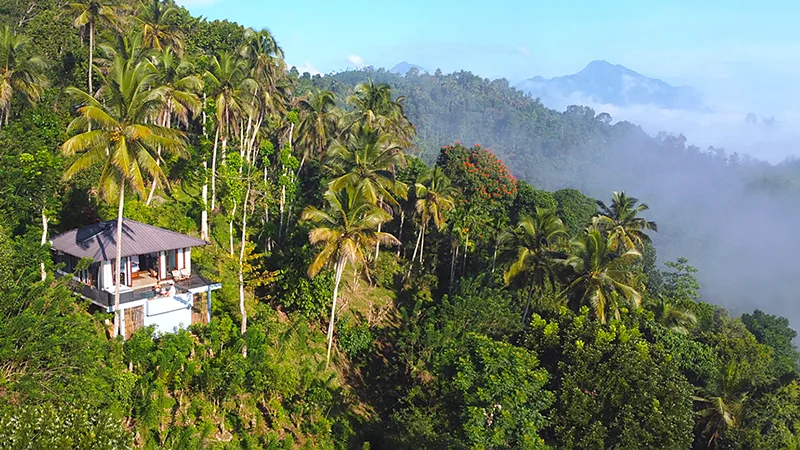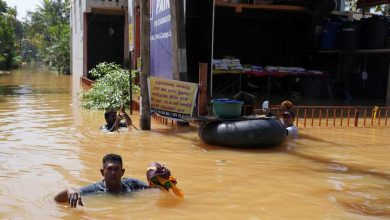THE 25 BEST PLACES TO TRAVEL IN 2025
From bubblegum-coloured lakes in Australia to a solar-powered safari camp in Botswana, these are BBC journalists’ top destinations this year.
Travel has the power to connect, inspire and even transform us. Peering over the edge of a crashing waterfall in Newfoundland and ascending sawtooth spires in the Italian Dolomites reveal how wondrous the world can be. But while travel should be a force for good, the past year has reminded us that it also has the potential to overwhelm and even harm the places we love, and many destinations are now imposing new restrictions as they grapple with the negative effects of overtourism.
In the BBC’s inaugural guide to the best places to travel this year, we wanted to highlight the destinations experiencing the opposite phenomenon. Each of these 25 spots is not only welcoming visitors and offering incredible travel experiences, but also using tourism to support local communities, protect the environment or preserve their unique cultural heritage. We compiled the list with input from BBC Travel journalists and some of the world’s leading sustainable travel authorities, such as the United Nations World Travel Organization, Sustainable Travel International and the World Travel & Tourism Council.
As tourism in many regions soars past pre-pandemic levels, and extreme weather and climate change reveal the fragile impermanence of many bucket-list destinations, travelling thoughtfully means considering where your trip can serve a larger good.
From trekking through a moonlike landscape in Bolivia to Arctic glamping in Greenland on the world’s largest island, your next great adventure is just ahead.
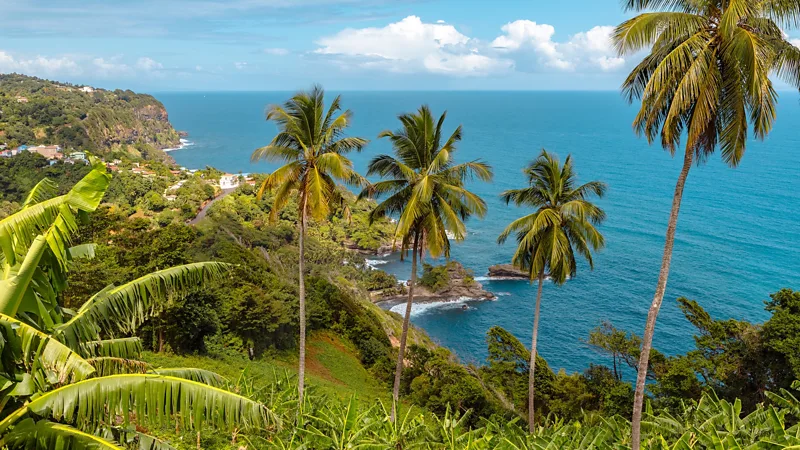
1. Dominica
Ever wanted to swim alongside sperm whales? Dominica now offers the chance to do it in an ethical, sustainable way as part of the Caribbean island’s groundbreaking commitment to marine conservation and regenerative tourism. The island nation recently established the world’s first sperm whale reserve, a protected marine area designed to safeguard its resident giants. Limited permits for whale swims ensure intimate, respectful encounters, offering visitors a once-in-a-lifetime experience to share the water with these incredible cetaceans while facilitating research and creating sustainable tourism opportunities for local residents.
New for 2025, expanded infrastructure and systems are set to welcome visitors, including digital immigration forms to ease arrival and the development of a cable-car system taking riders from Roseau Valley up to Boiling Lake, one of the world’s largest thermal springs. Access to the island has never been easier: on top of existing American Airlines flights from Miami, United Airlines is launching direct flights from Newark starting 15 February. Several new hotels are opening in 2025 (adding nearly 500 rooms with a 25% increase in inventory), including the six-star Hilton Tranquility Beach Resort and Spa in Salisbury. Or choose a tried-and-true classic such as Secret Bay, a luxury eco-property that frequently tops sustainability lists.
Dominica is also home to Project CETI, a groundbreaking international effort to decode whale language, clicks and codas, led by National Geographic Explorer David Gruber. Elsewhere, visitors can explore hidden gorges, towering waterfalls and feast on local cuisine at unique eateries, such as the farm-to-table Lacou. Dominica isn’t just a destination – it’s a movement to support a burgeoning model of eco-tourism that balances biodiversity conservation with economic growth, ensuring that your adventure helps protect this natural paradise for generations to come.
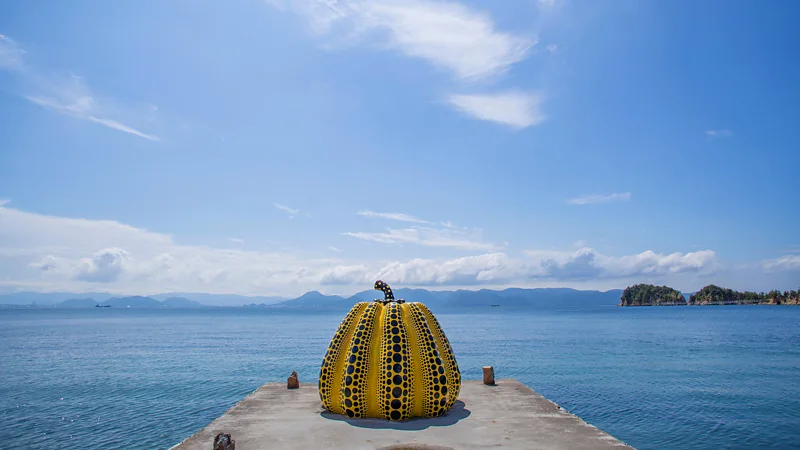
2. Naoshima, Japan
Home to one of Yayoi Kusama’s iconic yellow, polka-dotted Pumpkin sculptures, the Japanese island of Naoshima has become a must-see destination for connoisseurs of contemporary art and architecture. Once known (if at all) for its highly polluting copper smelting industry, the island’s transformation is thanks to Benesse Art Site Naoshima, which has helped create major museums and site-specific artworks in the scenically stunning (and dramatically population-dwindling) Seto Inland Sea, located between Japan’s main island of Honshu and Shikoku.
Spring 2025 sees the opening of the Naoshima New Museum of Art, designed by Tadao Ando, the award-winning architect behind nine other projects on the island. This new showcase for works by Asian artists will be a major highlight of this year’s Setouchi Triennale, with events and unveilings of artwork scattered across 17 islands and coastal areas of the Seto Inland Sea. Scheduled over 100 days and split between spring, summer and autumn to allow visitors to enjoy the region through the different seasons, this is the largest iteration of the Triennale since it began in 2010. The festival and activities of Benesse Art Site Naoshima have been instrumental in turning not only Naoshima’s fortunes around but also reviving the neighbouring islands of Teshima and Inujima.
Book ahead to visit Rei Naito and Ryue Nishizawa’s Teshima Art Museum, a one-of-a-kind synthesis of art, architecture and nature; while on Inujima, travellers will be amazed by the remains of a historic copper refinery reimagined as an epic-scale art installation. Memorable places to stay include Roka, a contemporary-styled ryokan on Naoshima, and the elegantly minimalist Espoir Inn on Teshima.

3. The Dolomites, Italy
Perpetual fan favourite Italy hardly needs more press – especially in a year when its supremely overtouristed capital, Rome, will be even more overwhelmed due to the 2025 Jubilee. But if Italy is still on your bucket list for 2025, consider taking a detour north to the Dolomite Mountains.
For Italians, the ruggedly beautiful Dolomites are synonymous with family fun and luxury holidays. The stunning sawtooth limestone cliffs sprawl across the regions of Veneto, Trentino-Alto Adige/Südtirol and Friuli-Venezia Giulia, attracting vacationing Italians in droves each year for their exquisite villages; peerless “white week” skiing; epic hike; and world-class, stick-to-your-ribs Alpine dishes. This classic Italian playground is often overlooked by overseas visitors – but that’s all poised to change.
The “Queen of the Dolomites”, Cortina d’Ampezzo, has been slated to co-host the 2026 Winter Olympics. The preparations, which will take place throughout 2025, include a vast series of infrastructure improvements throughout the area – all against a backdrop of pre-Olympic buzz. Visitors can expect to find expanded ski lift networks in the Dolomiti Superski area, where the towns of Alta Badia and Val Gardena will launch modernised lifts and enhanced connections to public transit operating within the area. New and upgraded cable cars, lifts and gondolas will also be introduced throughout the regions’ towns.
But the Dolomites is a thrilling destination in all seasons; visit in spring, summer and autumn to enjoy excellent trails, like 2024’s new Cammino Retico (The Rhaetian Way); a 170km, seven-day trail connecting remote villages between the Veneto and Trentino regions. And for pure relaxation, the luxury Aman Rosa Alpina hotel will have its grand reopening in 2025. The property will now offer 51 guest rooms and suites, two presidential suites and the private Chalet Zeno. Visit now, before the crowds descend.
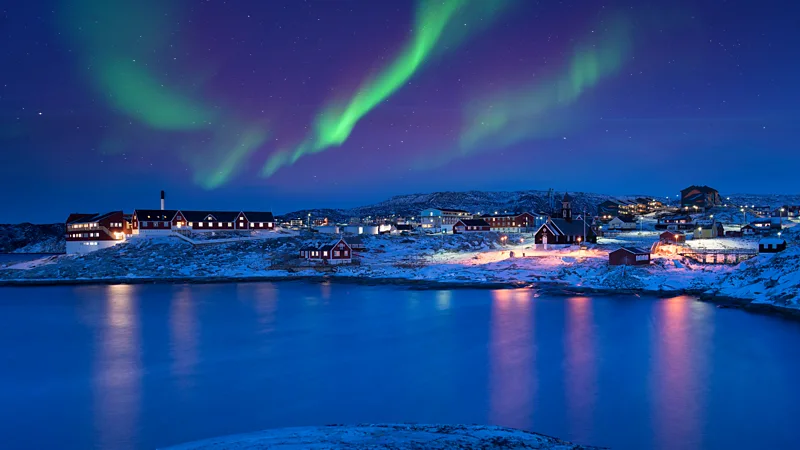
4. Greenland
There is nowhere on Earth like Greenland. Spanning more than two million sq km, the world’s largest island has a population of less than 57,000. Covered by a vast ice cap and spectacular mountains, its unspoiled wilderness and majestic fjords aren’t just a coveted geopolitical entity; they offer adventures of a lifetime.
Stunning hiking and spellbinding whale watching in summer and traditional dog sledding and the magical aurora in winter all make Greenland a bucket-list destination. However, it has been remote, expensive and time-consuming to reach – until now.
With the opening of a new international airport in the capital city of Nuuk and two more following in 2026, getting to Greenland has never been easier. The country is welcoming mindful adventure travellers who love exploring while also respecting its incredible nature and unique Inuit culture. Greenland has adopted a pledge “towards better tourism” and a new law aims to steer funds from tourism towards benefitting local communities.
A modern town with a historic waterfront, informative museums and impressive art galleries, Nuuk is also a launchpad for hiking, fishing and glamping trips and acts as a gateway for exploring a remarkable Arctic territory. Further north in Ilulissat, visitors can discover the jaw-dropping icebergs of Disko Bay and dramatic Unesco-recognised Icefjord. In the south, a region once settled by Vikings, there are gorgeous fjords and scenic green hills dotted with sheep farms.
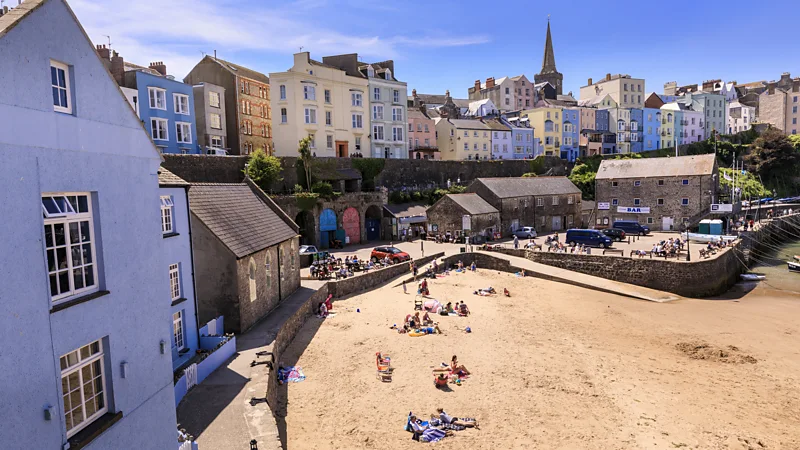
5. Wales
Though just one-sixth the size of England and far less visited than its more famous UK counterparts, Wales is filled with stunning national parks, awe-inspiring medieval castles and virtually no crowds – which only adds to its appeal. The new year offers travellers an additional excuse to explore one of Europe’s most up-and-coming destinations: Wales is celebrating 2025 as the Year of Croeso (“Welcome”). The year-long event showcases Welsh culture, language and attractions while inviting visitors to “Feel the hwyl” – an untranslatable Welsh word describing a deep state of joy that comes from being immersed in the moment.
In recent years, Wales has positioned itself at the forefront of sustainable, culturally focused travel. Tourism has helped play a role in the revival of the Welsh language and the nation is in the midst of a multi-year £5 billion programme that uses tourism funds to make various destinations more environmentally sustainable. As part of its Year of Croeso, Wales is investing in mobility bikes to help more adventure-seekers explore its wild side. What’s more, Wales is home to the Wales Coast Path, the only hiking path in the world that runs the entire length of a country’s coastline.
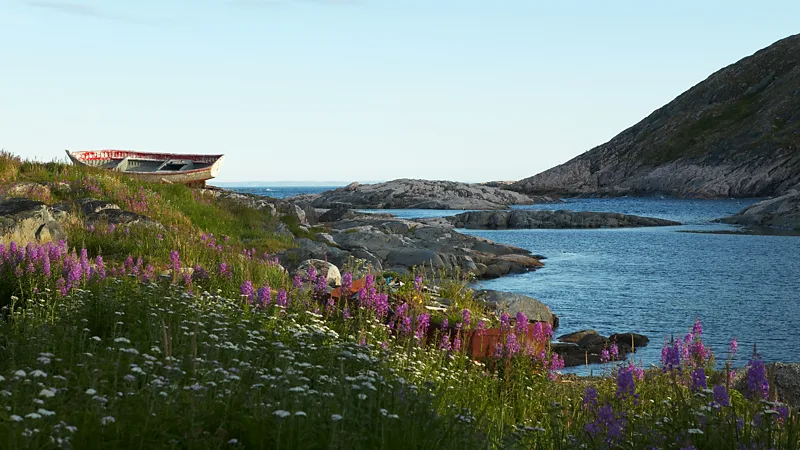
6. Western Newfoundland and Labrador, Canada
Labrador, the mainland portion of Newfoundland and Labrador in eastern Canada, is a vast, rugged region known for its windswept coastal villages, towering icebergs, subarctic forests and massive waterfalls – all underpinned by more than 9,000 years of human history. In 2025, the completion of the last stage of the 1,200km Trans-Labrador Highway – a feat that took nearly 25 years and $1bn to build – transforms this remote 294,330 sq km landscape into a more accessible destination.
The new circular route (known as Expedition 51) connects Labrador with five Canadian provinces while offering detours into the US and even France (via St Pierre and Miquelon). To encourage sustainable tourism and celebrate the cultural heritage in this formerly isolated part of the north, the Canadian government has invested $180m into Parks Canada sites in Western Newfoundland and Labrador. In 2025, Red Bay National Historic Site, a Unesco World Heritage Site and former Basque whaling station, will debut a new interactive boardwalk and visitor centre; L’Anse aux Meadows, home to the first Norse settlement in North America, is enhancing its ecological protections and upgrading visitor facilities; while Gros Morne National Park will introduce new interpretive exhibits that highlight the park’s dramatic geology, wildlife and landscapes.
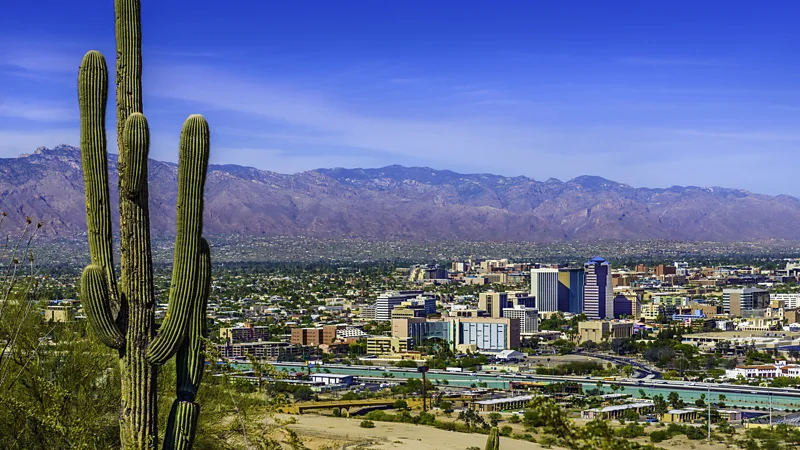
7. Tucson, Arizona, US
Tucson has a lot to celebrate in 2025. This year marks the 10th anniversary of when it became the first city in the US to receive a Unesco City of Gastronomy distinction, as well as the 250th anniversary of the city’s founding. Originally part of Mexico, the area now called Tucson will celebrate its unique multi-national history, as well as the deep-rooted Native American cultures that make it special, with a free event on 23 August featuring traditional Mexican music and dancing held at the Presidio San Agustin del Tucson. Visitors throughout the year can explore Tucson’s miles of desert hiking trails and historic buildings – like the 250-year-old San Xavier del Bac, the so-called “White Dove of the Desert”. Preservation like this points to why the city is set to receive a Sustainability Index Award from the Global Destination Sustainability Movement (GDS) this year.
But while the building’s history is impressive, the nearby gardens reveal an even richer history: they are the oldest continuously cultivated soil in the US. Four thousand years ago, the Tohono O’odham’s ancestors farmed squashes, beans and corn on this land. After mixing and melding with Mexican and other Indigenous flavours over the centuries, many of these ancient herbs and crops are still staples in kitchens across the city. Diners can immerse themselves in the city’s unique food scene at one of its city-of-gastronomy-certified restaurants or Heirloom Farmers Markets, which regularly feature unique local ingredients such as chiltepin chilis, edible cacti called nopales and prickly pear.

8. Western Australia
Known as the world’s most isolated big city, Perth – and the state of Western Australia (WA) – have long played second fiddle to the east coast cities of Melbourne and Sydney. However, with Australia’s only direct flights to Europe, Perth is positioning itself as Australia’s western gateway and a global aviation hub, with a $5bn redevelopment of Perth Airport set to enhance the travel experience. And with new connections to Asia, WA is poised to become a must-visit destination in 2025.
But it’s not just about getting here – it’s about what awaits. Outside of newly cool Perth and its gorgeous Swan Valley Wine Region, WA’s vast landscapes span more than 2.5 million sq km, encompassing 12,500km of pristine coastline, bubblegum-pink lakes, horizontal waterfalls, towering karri forests, wildflowers, wineries and wildlife encounters like swimming with whale sharks and snapping selfies with quokkas, the “happiest animal in the world”. Sustainability-minded road trippers can explore it all on the new 6,600km Electric Vehicle Highway, the world’s longest EV charging network.
WA is also championing its rich cultural heritage through the A$20m Jina Aboriginal Tourism Action Plan that supports authentic Indigenous-led experiences for travellers as well as Indigenous business development. Learn about the oldest living cultures on Earth on a truth-telling walking tour in Rockingham or a 4WD tag-along coast foraging tour complete with bush barbecue in Broome.
Add ancient petroglyphs at Murujuga National Park (under consideration for Unesco World Heritage status in 2025), new disability-friendly infrastructure and equipment on the stunning Houtman Abrolhos Islands, boutique hotels in Fremantle and tiny dream stays in the Great Southern, and WA is set to redefine travel to Australia this year.
9. Sri Lanka
From its misty hilltop tea plantations and roaming wild elephants to its ancient temples and rolling surf, Sri Lanka is a country that ticks lots of boxes. In April 2022, the former prime minister announced Sri Lanka’s bankruptcy, but a new president aims to rebuild the country’s fortunes after it was hit by a pandemic and civil unrest.
The resilient island nation is hoping to get back on its feet through tourism. The city of Kandy will see the opening of its first seven-star hotel, Aviyana Private Chalets, while Aarunya Nature Resort has a new family villa that includes an oculus for stargazing. There’s a $1bn megaresort opening in Colombo, and the launch of Sri Lanka’s new airline Air Ceilão, which will fly as far as Europe and Australia. The nation also recently launched the Good Travel Seal initiative, which celebrates local businesses who have adopted sustainable practices.
Visitors looking for a coolcation can take a legendary train ride into its mountainous interior, or travel to Colombo and Galle to discover a new generation of mixologists putting their spin on arrack, a 5th-Century drink. The island has also opened the 300km Pekoe Trail, which takes hikers through tea plantations and rural villages in the Central Highlands. For those who want to cover more ground, an innovative startup allows travellers to self-drive a tuk tuk across the island, with the money going directly to the owner.
